 Backend Development
Backend Development
 Python Tutorial
Python Tutorial
 A super-detailed graphic tutorial on creating a Django project with Pycharm
A super-detailed graphic tutorial on creating a Django project with Pycharm
A super-detailed graphic tutorial on creating a Django project with Pycharm
This article brings you relevant knowledge about Python. Django is a relatively classic Python web framework. I happened to use Django in the project recently, so the following article mainly introduces it to you. Here is a super detailed graphic tutorial on using Pycharm to create a Django project. I hope it will be helpful to everyone.

[Related recommendations: Python3 video tutorial]
Django Introduction
- Django is an open Source code web application framework, written in Python.
- The framework pattern of MTV is adopted, namely model M, view V and template T. It was originally developed to manage some of the news content-based websites of Lawrence Publishing Group, that is, CMS (Content Management System) software. And was released under the BSD license in July 2005. This frame is named after the Belgian gypsy jazz guitarist Django Reinhardt.
- On December 2, 2019, Django 3. 0 was released (Python 3.8).
Create Django's virtual environment
1. Here I use anaconda navigator to create it, select environment, and click create.
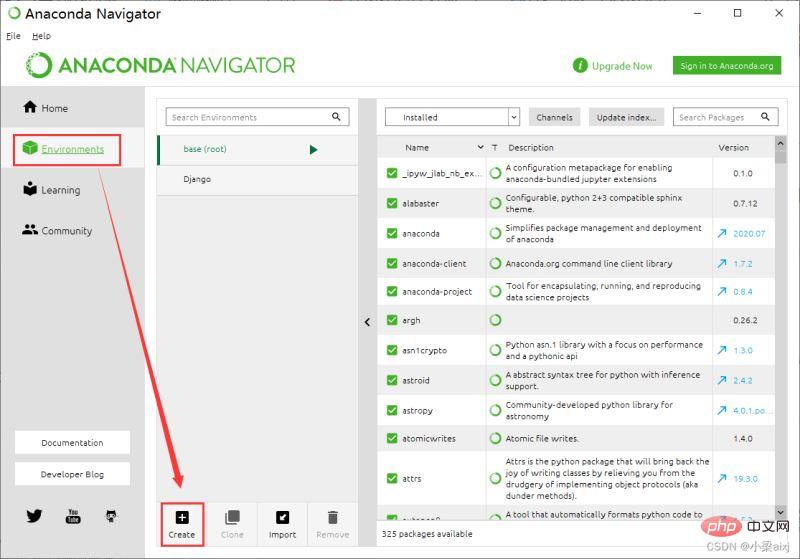
#2. Set the environment name and select the python3.8 version.
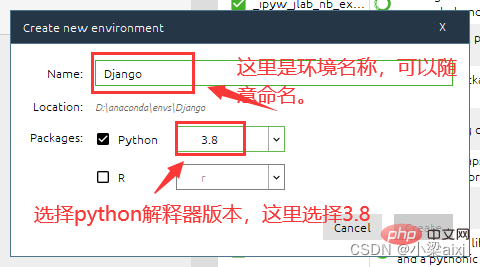
#3. You can install the modules needed in the environment here. (Do not use this method to install modules, other methods will be introduced below)

For example:
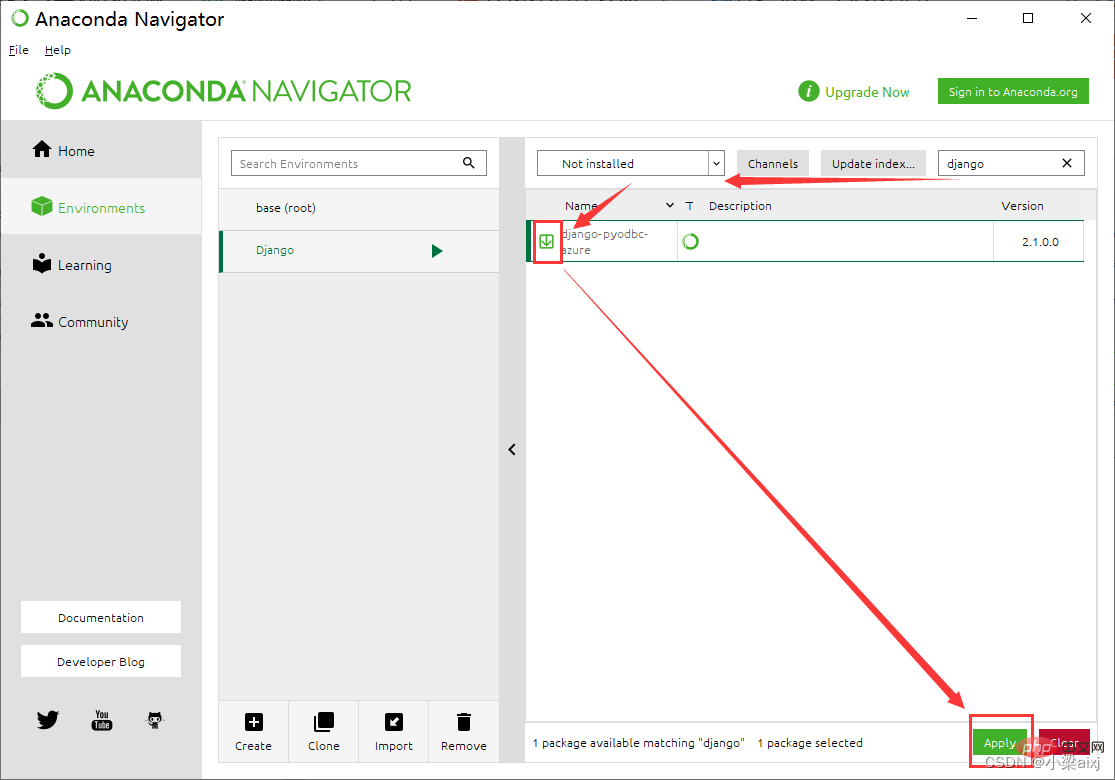
4. Installation For django3.0, use the command: pip install django==3.0. The installation is successful only when successfully appears.

5. Install another django_simpleui here, which will be used later when creating a django project.
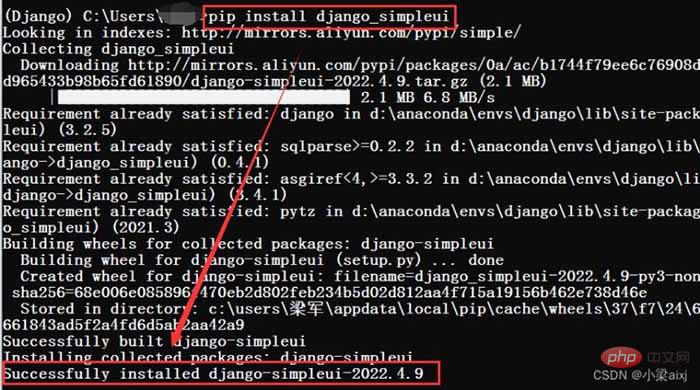
simpleui Introduction
simpleui is a theme based on Django background management, mainly to beautify and simplify Django's built-in background management interface. It has 28 popular themes built-in. Pip lightning installation is 100% compatible with native admin without modifying the code. It has multi-tab pages and each module is clearer. The configuration is simple and quick to get started. After adding simpleui to settings.py, it will take effect immediately and the efficiency will be increased by 100%! Make back-end development easy. Element-UI Vue blessing gives the ancient django admin a new look.
Create Django project
1. Open pycharm and create a new project (new project).
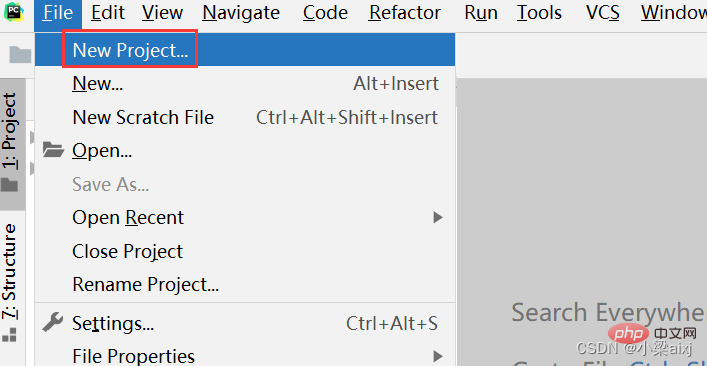
#2. Set the project path (location) and select existing interpreter.
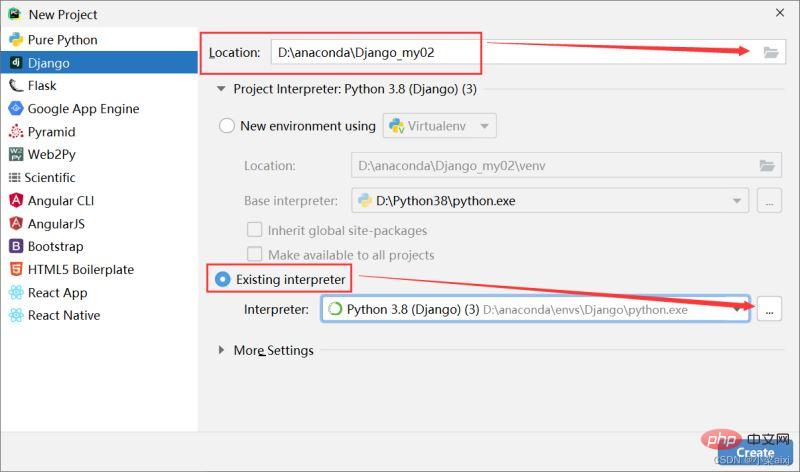
#3. Set up the compiler (interpreter).
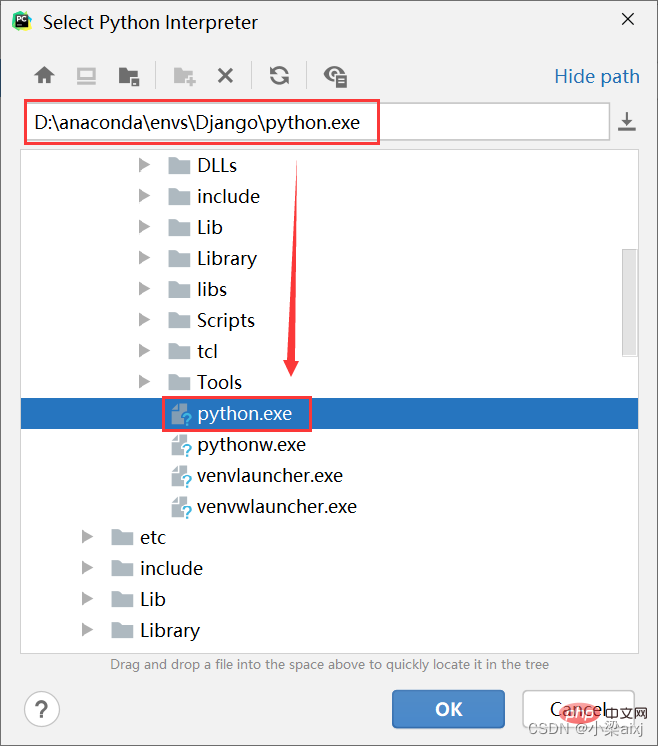
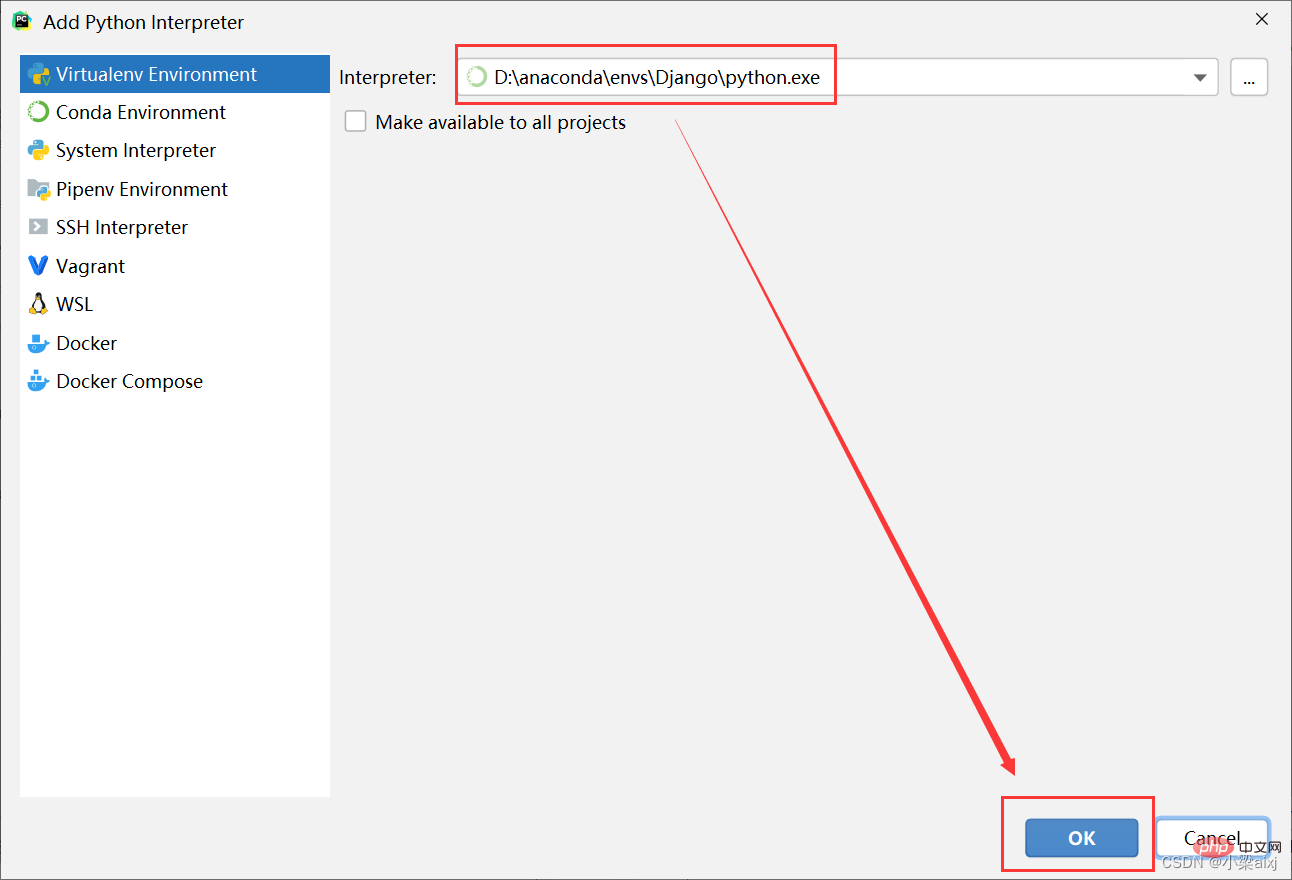
4. Complete the configuration and click create.
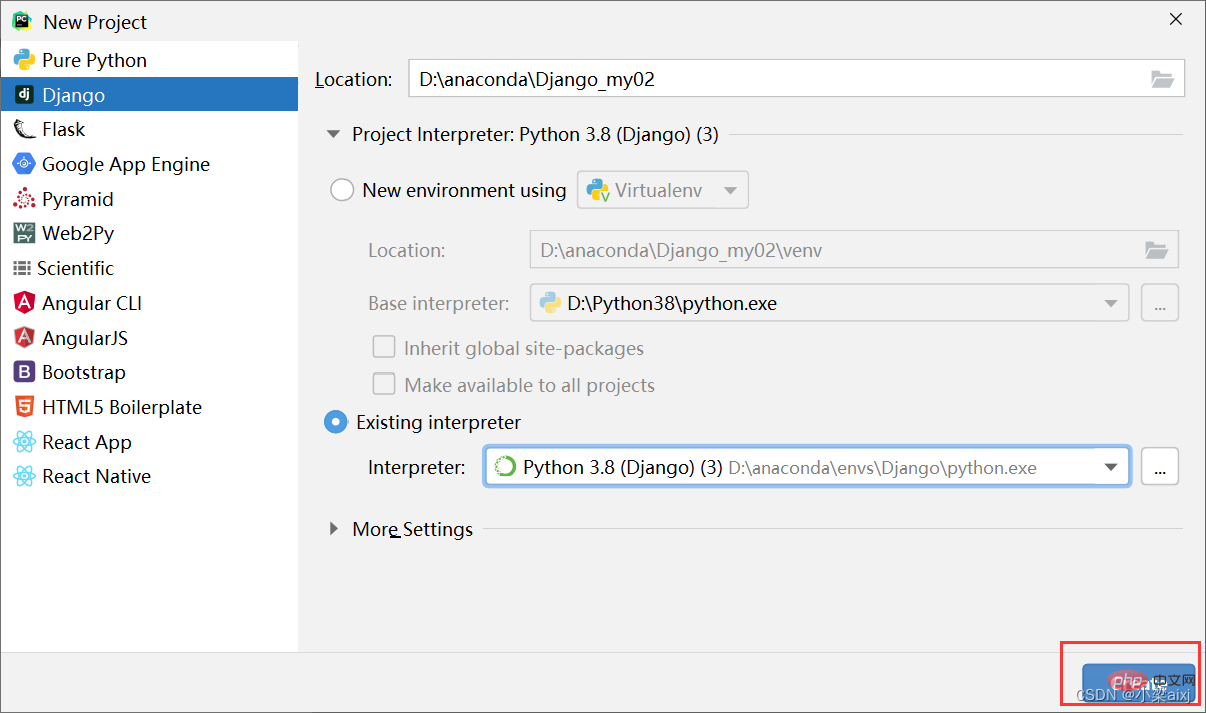
5. Select new window and a new window will open.

#6. When the interface shown below appears, it is basically successful.
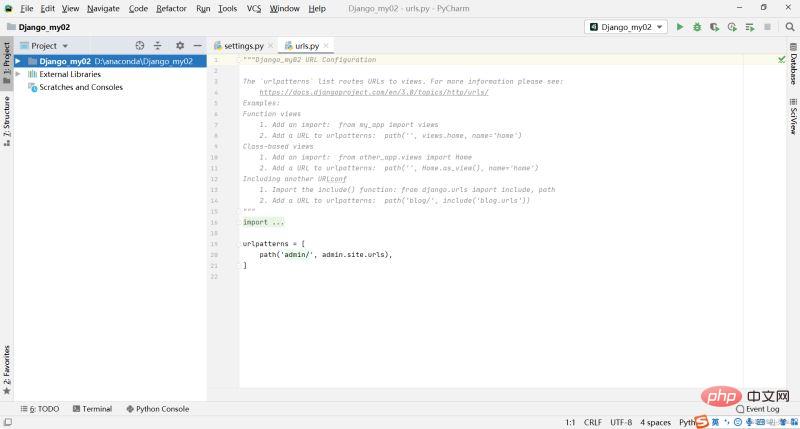
7. Run manage.py to check whether the site is installed successfully.

#8. Click the address in the running result.
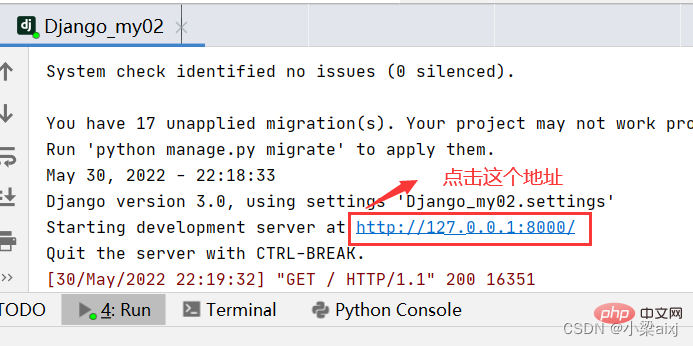
#9. The following picture appears and you’re done.
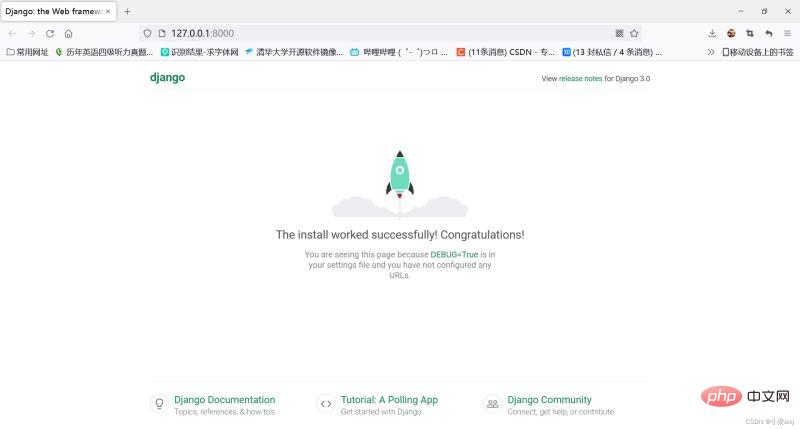
[Related recommendations: Python3 video tutorial]
The above is the detailed content of A super-detailed graphic tutorial on creating a Django project with Pycharm. For more information, please follow other related articles on the PHP Chinese website!

Hot AI Tools

Undresser.AI Undress
AI-powered app for creating realistic nude photos

AI Clothes Remover
Online AI tool for removing clothes from photos.

Undress AI Tool
Undress images for free

Clothoff.io
AI clothes remover

Video Face Swap
Swap faces in any video effortlessly with our completely free AI face swap tool!

Hot Article

Hot Tools

Notepad++7.3.1
Easy-to-use and free code editor

SublimeText3 Chinese version
Chinese version, very easy to use

Zend Studio 13.0.1
Powerful PHP integrated development environment

Dreamweaver CS6
Visual web development tools

SublimeText3 Mac version
God-level code editing software (SublimeText3)

Hot Topics
 1670
1670
 14
14
 1428
1428
 52
52
 1329
1329
 25
25
 1274
1274
 29
29
 1256
1256
 24
24
 PHP and Python: Different Paradigms Explained
Apr 18, 2025 am 12:26 AM
PHP and Python: Different Paradigms Explained
Apr 18, 2025 am 12:26 AM
PHP is mainly procedural programming, but also supports object-oriented programming (OOP); Python supports a variety of paradigms, including OOP, functional and procedural programming. PHP is suitable for web development, and Python is suitable for a variety of applications such as data analysis and machine learning.
 Choosing Between PHP and Python: A Guide
Apr 18, 2025 am 12:24 AM
Choosing Between PHP and Python: A Guide
Apr 18, 2025 am 12:24 AM
PHP is suitable for web development and rapid prototyping, and Python is suitable for data science and machine learning. 1.PHP is used for dynamic web development, with simple syntax and suitable for rapid development. 2. Python has concise syntax, is suitable for multiple fields, and has a strong library ecosystem.
 How to run sublime code python
Apr 16, 2025 am 08:48 AM
How to run sublime code python
Apr 16, 2025 am 08:48 AM
To run Python code in Sublime Text, you need to install the Python plug-in first, then create a .py file and write the code, and finally press Ctrl B to run the code, and the output will be displayed in the console.
 PHP and Python: A Deep Dive into Their History
Apr 18, 2025 am 12:25 AM
PHP and Python: A Deep Dive into Their History
Apr 18, 2025 am 12:25 AM
PHP originated in 1994 and was developed by RasmusLerdorf. It was originally used to track website visitors and gradually evolved into a server-side scripting language and was widely used in web development. Python was developed by Guidovan Rossum in the late 1980s and was first released in 1991. It emphasizes code readability and simplicity, and is suitable for scientific computing, data analysis and other fields.
 Python vs. JavaScript: The Learning Curve and Ease of Use
Apr 16, 2025 am 12:12 AM
Python vs. JavaScript: The Learning Curve and Ease of Use
Apr 16, 2025 am 12:12 AM
Python is more suitable for beginners, with a smooth learning curve and concise syntax; JavaScript is suitable for front-end development, with a steep learning curve and flexible syntax. 1. Python syntax is intuitive and suitable for data science and back-end development. 2. JavaScript is flexible and widely used in front-end and server-side programming.
 Golang vs. Python: Performance and Scalability
Apr 19, 2025 am 12:18 AM
Golang vs. Python: Performance and Scalability
Apr 19, 2025 am 12:18 AM
Golang is better than Python in terms of performance and scalability. 1) Golang's compilation-type characteristics and efficient concurrency model make it perform well in high concurrency scenarios. 2) Python, as an interpreted language, executes slowly, but can optimize performance through tools such as Cython.
 Where to write code in vscode
Apr 15, 2025 pm 09:54 PM
Where to write code in vscode
Apr 15, 2025 pm 09:54 PM
Writing code in Visual Studio Code (VSCode) is simple and easy to use. Just install VSCode, create a project, select a language, create a file, write code, save and run it. The advantages of VSCode include cross-platform, free and open source, powerful features, rich extensions, and lightweight and fast.
 How to run python with notepad
Apr 16, 2025 pm 07:33 PM
How to run python with notepad
Apr 16, 2025 pm 07:33 PM
Running Python code in Notepad requires the Python executable and NppExec plug-in to be installed. After installing Python and adding PATH to it, configure the command "python" and the parameter "{CURRENT_DIRECTORY}{FILE_NAME}" in the NppExec plug-in to run Python code in Notepad through the shortcut key "F6".



